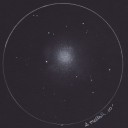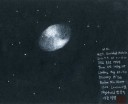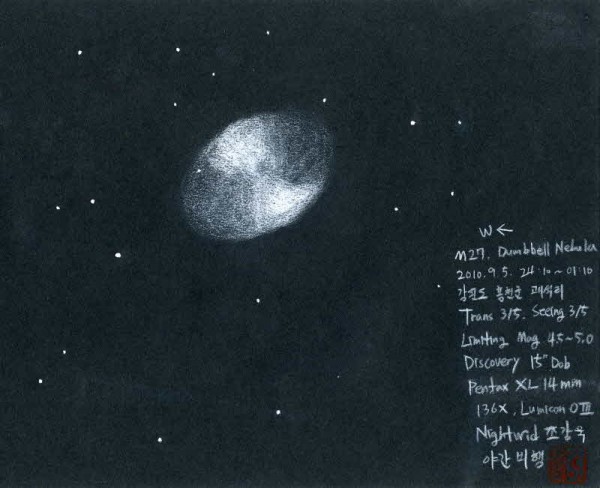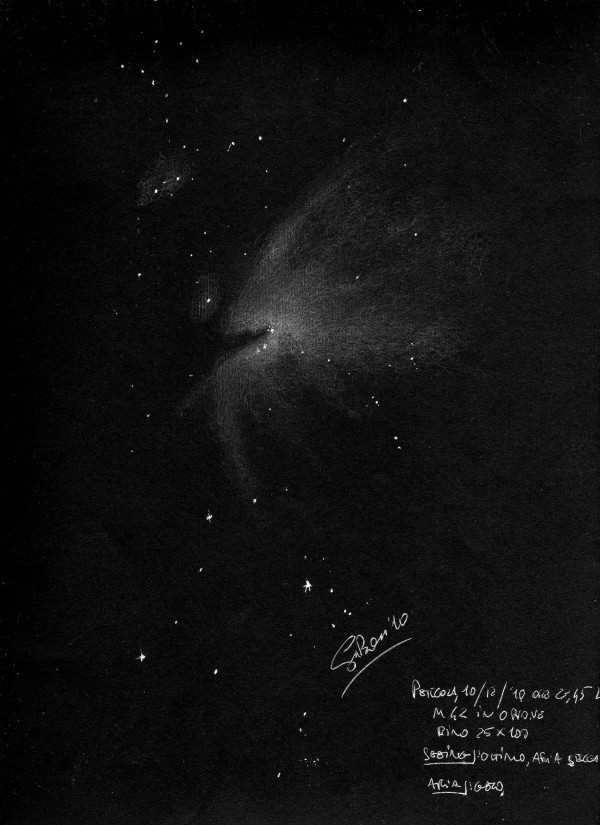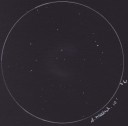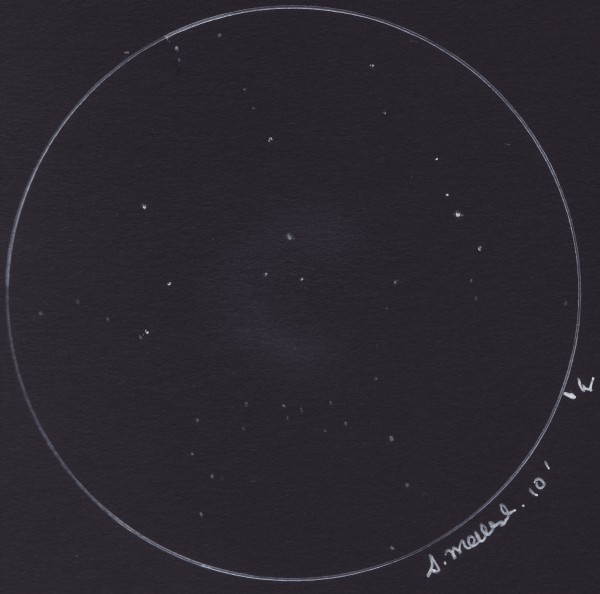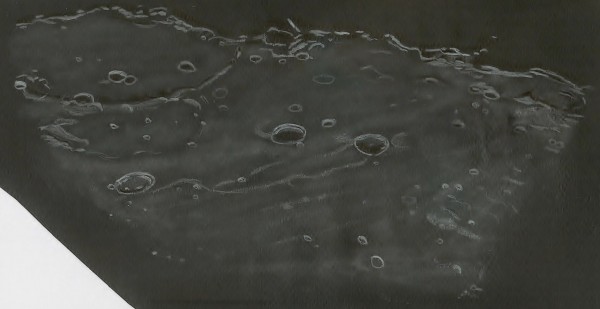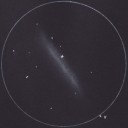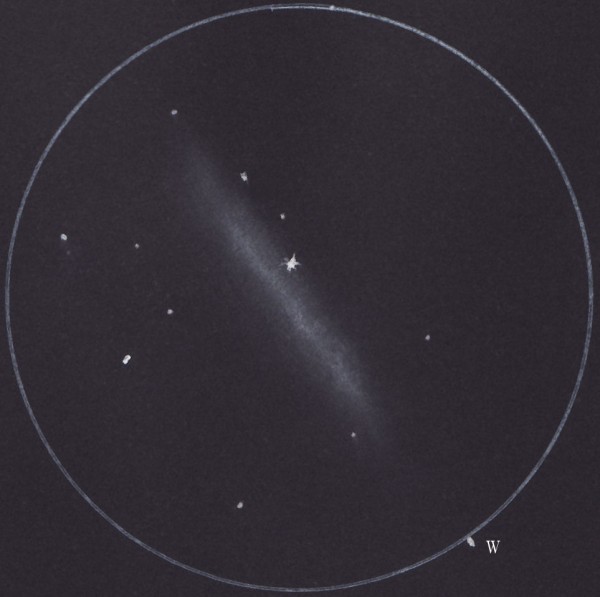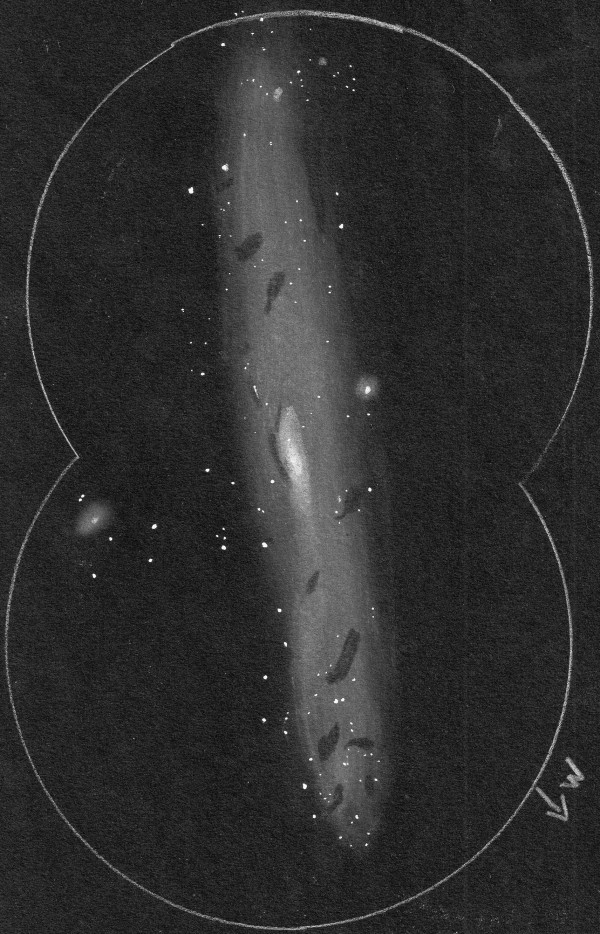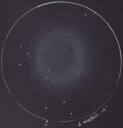NGC 5139
Omega Centauri
Globular Cluster
Centaurus
09/08/10
Ilford NSW Australia
76mm Televue Apo Refractor
Field: 62′
Magnification: 48x
Sky Quality Meter reading: 21:38
I always find NGC 5139 a bit much in large scopes, a more elegant view of this grandiose globular can be had in smaller instruments.
As rain had been forecast I had packed the 56cm dob away, but I left my 76mm Apo set up just in case.
I went into the shed to lay down and listen to some music.
About an hour later I felt the urge to proceed to the toilets, and lone and behold it was completely clear.
It was not long before I was at the 76mm Apo with a bino view and two 14mm Radian eyepieces.
Needless to say it was a splendid view with the globular just barely giving the chance to resolve a smattering of tiny stars.
I just had time to complete this sketch when the clouds rolled back in, and then it began to rain, and rain, and rain.
Come the next morning it was still raining, and I could not get out of the place quick enough and go back home.
Scott Mellish.
